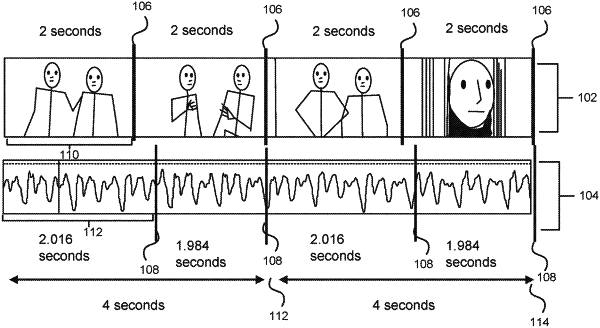| CPC H04N 21/8547 (2013.01) [H04N 21/23418 (2013.01); H04N 21/812 (2013.01); H04N 21/8455 (2013.01)] | 20 Claims |

|
1. A computer-implemented method, comprising:
receiving, by a computer system, media content that includes an audio portion and a video portion;
receiving, by the computer system, a first set of time stamps associated with the media content;
generating, by the computer system, an unencrypted encode of the video portion of the media content;
generating, by the computer system, a second set of time stamps associated with the video portion of the media content based at least in part on implementing a computer vision algorithm that uses the unencrypted encode of the video portion;
generating, by the computer system, a third set of time stamps associated with the video portion using a first algorithm for identifying instantaneous decoder refresh (IDR) frames in the unencrypted encode of the video portion, the first set of time stamps, the second set of time stamps, and the third set of time stamps identifying potential boundaries for interleaving additional content into the media content;
generating, by a priority algorithm of the computer system that receives and uses an input, a fourth set of time stamps that includes a subset of a combination of the first set of time stamps, the second set of time stamps, and the third set of time stamps, wherein each time stamp of the fourth set of time stamps serves as a boundary for interleaving the additional content into the media content based at least in part on the priority algorithm, and wherein the input comprises the first set of time stamps, the second set of time stamps, the third set of time stamps, and a priority assigned to the first set of time stamps, the second set of time stamps, and the third set of time stamps;
encoding, by the computer system, the video portion of the media content using the fourth set of time stamps to determine the IDR frames for the media content; and
encoding, by the computer system, the audio portion of the media content using the fourth set of time stamps and a second algorithm for synching first fragments of the audio portion with second fragments of the video portion.
|